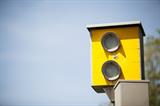-

07/12/21 Older drivers 2021
More and more Britons are living longer and healthier lives but, at this report finds, the car is still by far the most popular transport option for them and one they are not keen to give up. The number of drivers over the age of 80 is now getting close to two million and many are using their cars more often as a central part of their active lives.
More information -

18/11/20 The drink drive limit
The debate on the maximum permitted blood alcohol limit for drivers has continued ever since the Scottish Government lowered the drink-drive limit north of the border in 2014. It has also become more pressing with the flat lining in drink related deaths over recent years. Surveys of the public also show a consistently high degree of support for a lower limit across the country. So, there is seemingly an appetite for change. But what is IAM RoadSmart’s view?
More information -

08/03/16 Lowering the drink drive limit
The debate on the maximum permitted blood alcohol limit for drivers has been reignited following the Scottish Government's decision to lower the limit north of the border and by the recent flat lining in drink related deaths.
More information -

08/03/16 Improving the safety of younger drivers - the views of IAM RoadSmart
Younger people have no incentive to treat driving as a skill for life and often seek to learn as quickly and as cheaply as possible. New drivers are most at risk in their first year of driving and yet the current system abandons them to learn by their own, sometimes fatal mistakes.
More information -

15/02/16 20 mph limits
20mph zones, areas and limits have been gaining in popularity in recent years but their overall impact on road safety is at best unclear. Schemes to reduce speed through communities are often popular with local residents but their biggest benefits are often in health and environmental improvements rather than injury reduction. Speed limits must match the road environment or drivers can become confused so getting the speed limit right promotes self-compliance and removes the need for expensive enforcement.
More information -

15/02/16 Safety (speed) cameras
Since their introduction in the UK in 1992, safety cameras (formerly known as speed cameras) have become one of the most controversial aspects of road safety strategy, at times dividing opinion among motorists, road safety professionals and activists and even within central and local government.
More information -

15/02/16 Electric vehicles- too quiet for our own good?
Electric and hybrid vehicles are being encouraged by all European governments as part of greenhouse gas reduction policies. The electric vehicle charging network is growing and there are now over 9000 public charging stations nationwide.
More information -

15/02/16 Designing roads to save motorcyclists' lives
Road designers frequently ignore the needs of motorcyclists when they design and upgrade our roads. The location of manhole covers, junction design, fuel spills, use of bus lanes and basic road maintenance programmes all have a direct effect on the safety of motorcycle users.
More information -

15/02/16 Motorway services – road safety or rip-off?
Encouraging drivers to take regular breaks from driving is the Government’s main objective for motorway service areas (MSAs). But if drivers don’t believe motorway services are attractive places to take a break, many won’t stop and they will exercise their consumer choice and continue driving, or leave the motorway to seek out alternative facilities.
More information -

15/02/16 Smart motorways
England’s motorways are among the most congested in Europe and the government has plans to convert over 10% of the motorway network to smart (previously known as managed) motorways. This offers a cheaper way to increase capacity than motorway widening but will change the way we drive on our safest roads.
More information -

15/02/16 Intelligent Speed Assistance (ISA)
ISA uses global satellite positioning (GPS), a digital map to establish a car’s location and sign recognition cameras to identify what the speed limit is at any point on the road.
More information -

15/02/16 Drugs and driving
Many drug users simply do not believe that their driving is affected by the drugs they are taking, and in some cases they believe it enhances driving skill. Many habitual drug users continue to use a car as part of the everyday routine of their lives.
More information -

15/02/16 The motorway speed limit – 70, 80 or ?
Speed surveys show that on uncongested motorways, 57 per cent of car drivers exceed the 70mph speed limit, and 20 per cent exceed 80 mph. IAM RoadSmart's most serious concern is that legalising today’s unofficial and tolerated 80 mph speed limit could create tomorrow’s unofficial 90 mph limit. Average traffic speeds would increase, as would accidents and their severity and more people could be killed and seriously injured.
More information -

11/02/16 Promoting safer cycling
Promoting safer cycling
More information -

04/02/16 Mobile Phones and Driving
IAM RoadSmart welcomed the banning of hand held mobile phones. Scientific research clearly demonstrates that a driver cannot safely control a car and make or take phone calls at the same time. Deaths and injury caused when a driver is distracted by a mobile phone are completely avoidable and a senseless waste of life.
More information
